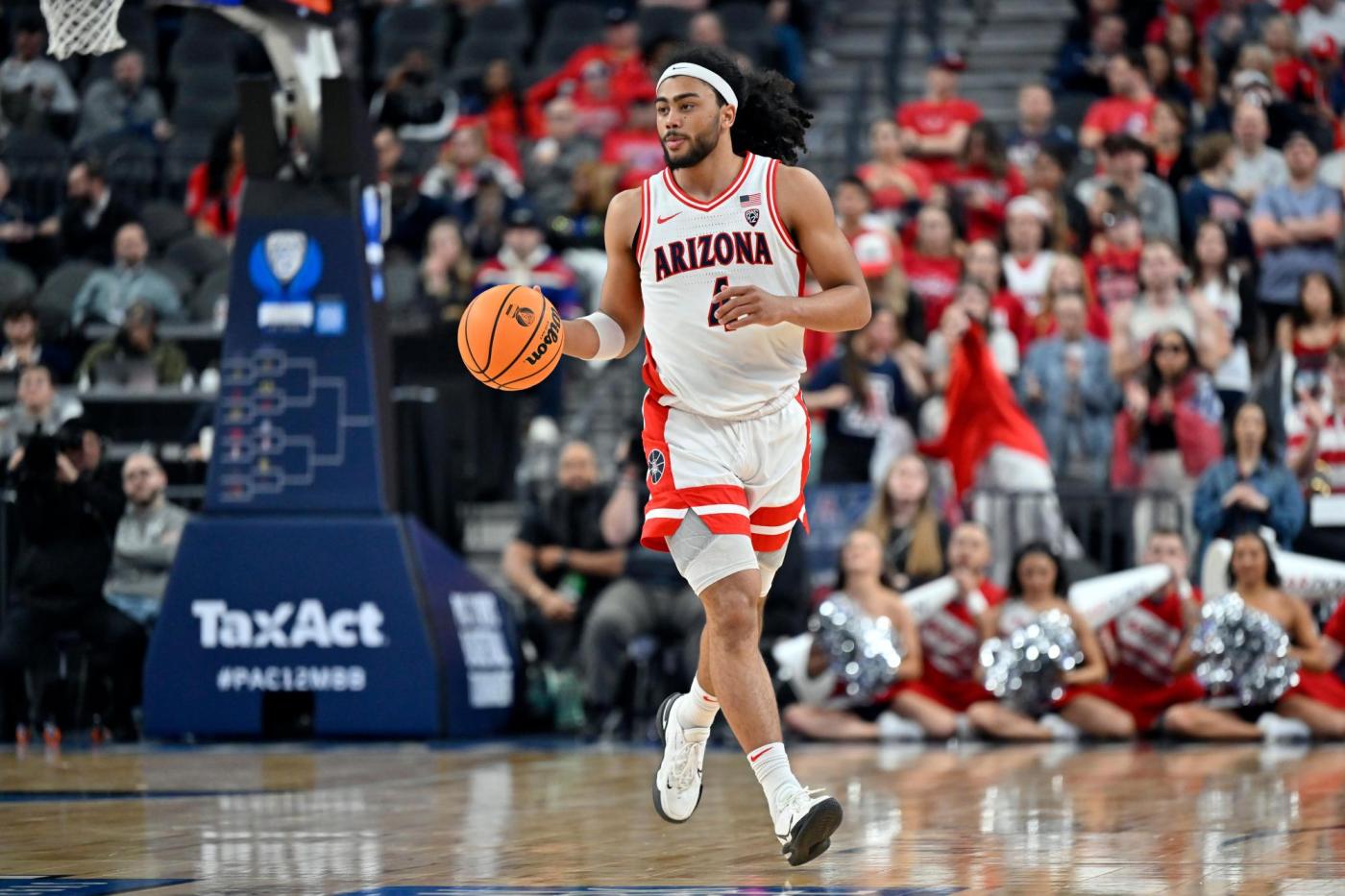We could plunge into the weeds of Arizona’s latest NCAA Tournament exit, but all the ghastly losses strewn across the Sonoran landscape — the hides of March, so to speak — provide far better context.
Losing by five points to a No. 6 seed hardly qualifies as the most excruciating result.
Compared to the late-game meltdown against No. 11 Xavier in 2017, the no-show against No. 13 Buffalo in 2018, the timid showing against No. 5 Houston in 2022 and the collapse against No. 15 Princeton last spring, what we witnessed last week in the Sweet 16 was amateur hour.
Other programs with Arizona’s expectations might respond to the 77-72 loss to Clemson with months of second-guessing and hand wringing. For the Wildcats, it was merely standard fare.
Granted, the broader trajectory of Arizona’s season was eerily familiar.
Team November blasted its way through the opening weeks, recorded a slew of high-profile victories, climbed to No. 1 in the land and cruised to a No. 2 seed in the NCAAs.
Then: kaboom!
After two impressive victories in Salt Lake City to open tournament play, the Wildcats moved even closer to home (Crypto.com Arena in L.A.) and played like a bewildered road team.
It was an odd dynamic: Arizona never should have lost — Clemson scored one point during a five-minute stretch late in the game — and yet it deserved to lose.
The shot selection was terrible.
The adjustments to Clemson’s tactics were lacking.
And the defense down the stretch? Goodness, it was awful.
Teams with sound defensive foundations don’t get beat on back-doors, back-screens and slip screens when it matters most. But Clemson repeatedly converted layups out of its half-court sets and inbound plays precisely when Arizona should have been fully locked in.
The end result? The Wildcats have lost six consecutive tournament games to teams seeded at least four spots lower — the longest such streak in tournament history, according to Stats Perform.
That said, two things are equally true: Coach Tommy Lloyd’s three teams have not performed well in the glare of March, when seasons are defined and legacies established, and he’s the right coach for the Wildcats moving forward.
Lloyd turns 50 at the end of the calendar year but is a young head coach, with just 108 games on his resume. He’s far less experienced than Lute Olson when he arrived in Tucson or Sean Miller when he took charge of the program.
It does not require a leap of faith to presume Lloyd will learn from March mistakes, tweak his philosophy and roster accordingly and eventually guide Arizona deep in the NCAAs.
But as we cast an eye forward, a third truth reveals itself: This was Arizona’s last best chance to end the 23-year Final Four drought for the foreseeable future.
Everything gets more difficult next season in the Big 12, which arguably possesses the deepest lineup of quality programs in the country.
Certainly, it’s exponentially more difficult than the Pac-12 has been over the years.
Arizona hasn’t dominated the Pac-12 the way Gonzaga owns the West Coast Conference — there is no equivalent of UCLA in the WCC — but enough parallels exist to lend perspective.
Just as the Zags possess intrinsic advantages over their peers with regard to resources, reputation and recruiting prowess, so have Arizona and UCLA been fundamentally better positioned for success on a yearly basis relative to all the fair-to-middlin’ basketball programs in the Pac-12.
That won’t be the case in the Big 12, which features four schools that have reached the Final Four in the past five tournaments: Kansas, Baylor, Texas Tech and Houston, which made its run from the American Athletic Conference in 2021.
The enhanced competition likely means Arizona will lose more often during the regular season, potentially leading to lower seeds in the NCAAs.
The Wildcats have repeatedly failed to reach the Elite Eight, much less the Final Four, from the top lines.
Imagine the challenges when they must navigate March as the No. 5 or 6 seed.
Actually, we don’t have to imagine. The data is available.
— Chances of reaching the Sweet 16 by seed:
No. 1: 84.2%
No. 2: 62.5%
No. 3: 52.6%
No. 4: 47.4%
No. 5: 34.2%
No. 6: 28.9%
— Chances of reaching the Final Four by seed:
No. 1: 39.5%
No. 2: 21.1%
No. 3: 11.2%
No. 4: 9.2%
No. 5: 5.9%
No. 6: 2.0%
A program that typically underperforms its seed will have exponentially worse odds of advancing if it loses just two seed lines, on average, in the Big 12.
Sure, you could flip the discussion and make the case that stronger competition in the Big 12 will fortify the Wildcats for the NCAAs.
Related Articles
March Madness: Winners, losers as UConn, N.C. State reach Final Four
Pac-12 survival: Tallying up the cash available for WSU, OSU
Mailbag: The end of Pac-12 men’s basketball (for now)
Pac-12 recruiting: USC hits jackpot while Washington wins in NorCal
Sweet 16 preview: UCLA, CU stand in way of Caitlin Clark v Angel Reese
You could argue that lower seeds will alleviate the pressure on a program that often recoils from the glare.
You could argue that lower seeds will result in Arizona getting shipped to distant cities for the regionals — and that the players will benefit from being further from home. (The 1997 national championship team went through Memphis and Birmingham to reach Indianapolis.)
All those things are possible, sure.
And it will be fascinating to watch the Big 12 experience play out for a program so used to dominating its conference, then flaming out in March.
*** Send suggestions, comments and tips (confidentiality guaranteed) to pac12hotline@bayareanewsgroup.com or call 408-920-5716
*** Follow me on Twitter/X: @WilnerHotline
*** Pac-12 Hotline is not endorsed or sponsored by the Pac-12 Conference, and the views expressed herein do not necessarily reflect the views of the Conference.












